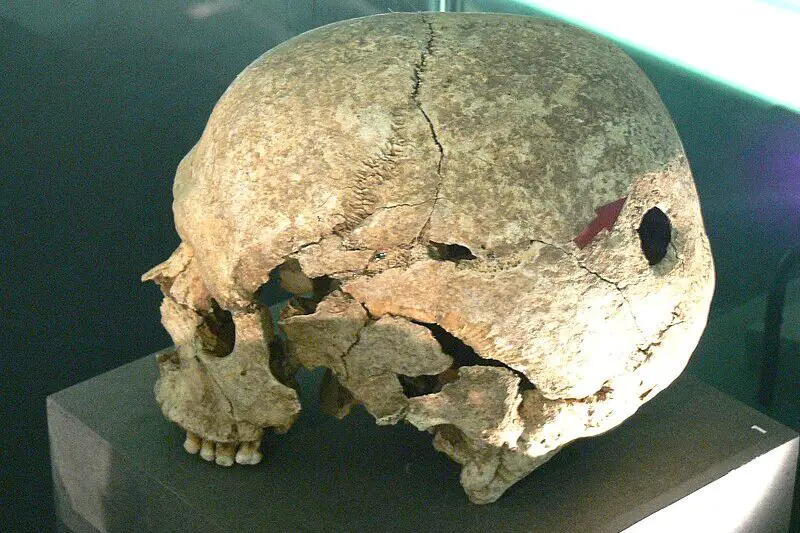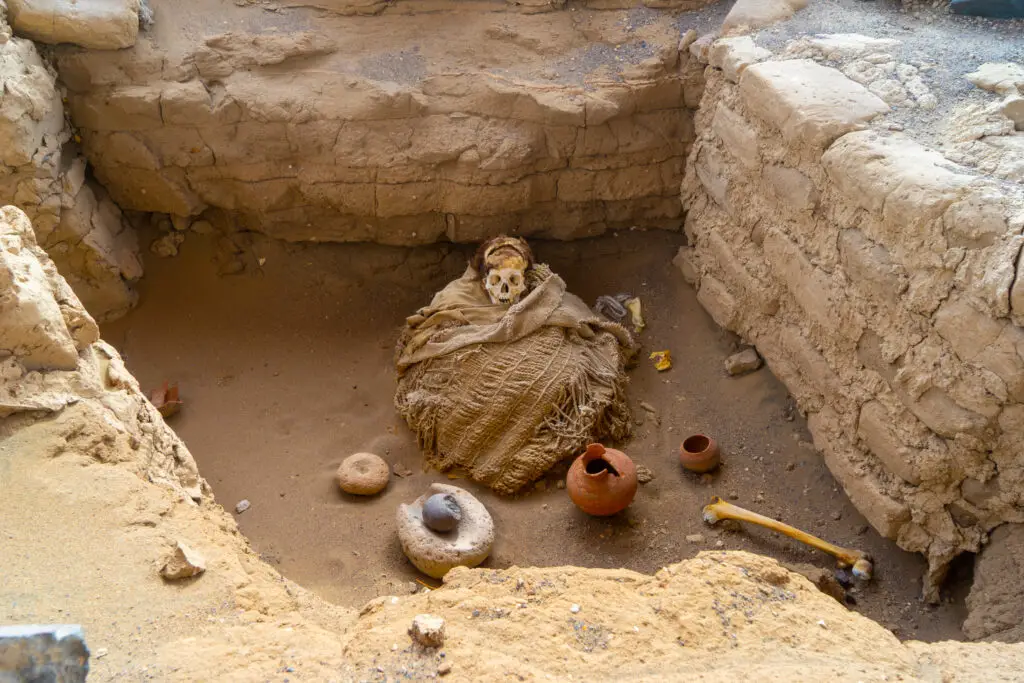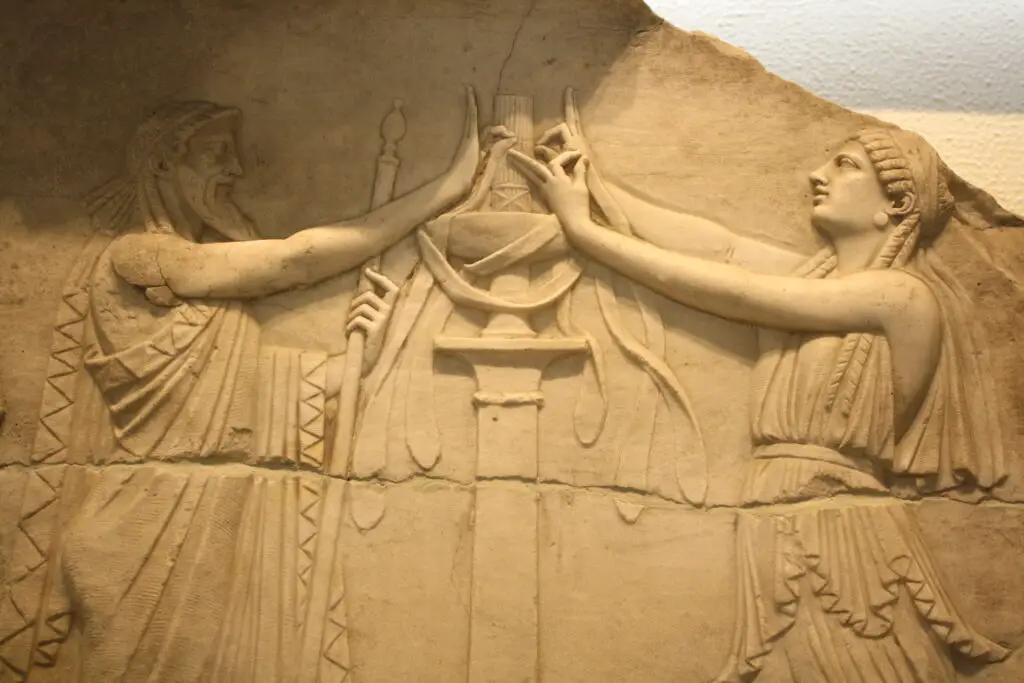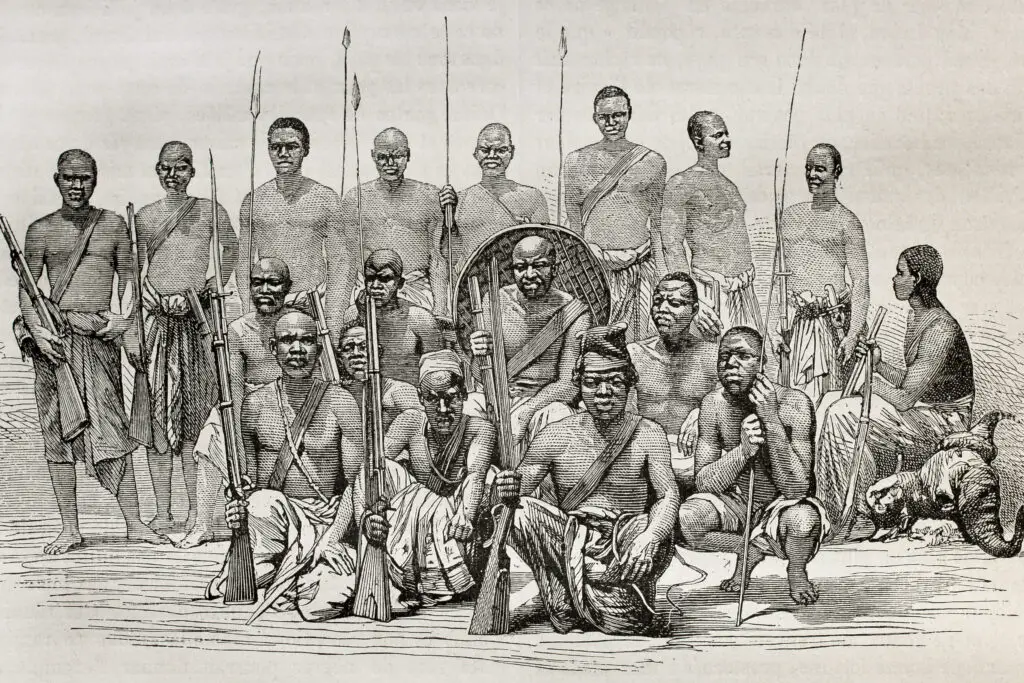1. Trepanation Wasn’t Just Gruesome Guesswork

As shocking as it sounds, ancient people used to drill holes in skulls—a process called trepanation. While it looks barbaric by modern standards, some researchers believe it was actually an early form of brain surgery meant to relieve pressure from head trauma or treat mental illness shares All That’s Interesting.
There’s evidence of patients surviving the procedure, with skulls showing signs of healing. That means this wasn’t some random ritual, but something grounded in early medical understanding. Ancient healers may not have had MRIs, but they were observing symptoms and trying real interventions. In many cases, they seemed to know what they were doing. It’s wild to think that a practice we once dismissed as superstition might actually have helped people. And honestly, the survival rate in some ancient cultures was better than you’d expect adds Medical News Today.
2. Egyptian Embalming Was Advanced Chemistry

Mummification might seem purely spiritual, but it involved a lot of trial, error, and understanding of chemistry. Egyptians used natron, a naturally occurring salt mixture, to preserve bodies, effectively drying out tissues to prevent decay says History.com.
They didn’t just wing it either—they tested different materials over time and adjusted the process. Scientists today have studied ancient recipes for embalming and found them surprisingly effective. The Egyptians also removed organs, treated them separately, and understood which parts decomposed fastest. It wasn’t magic, it was practical science masked in ritual. Behind the ceremony was a keen understanding of preservation. They were preserving memory and biology all at once shares Popular Science.
3. Ayurveda Was a Holistic Health System

Ayurveda is often viewed as spiritual, but it was deeply rooted in observation and experimentation. Originating in India over 3,000 years ago, it used herbs, diet, massage, and even surgical tools to treat illness.
Practitioners understood digestion, the nervous system, and the mind-body connection long before Western medicine caught on. Their treatments were tailored to the individual, and many are still used today. For example, turmeric, once used in Ayurvedic medicine, is now studied for its anti-inflammatory properties. They didn’t just believe illness came from spirits—they tracked symptoms and adjusted care accordingly. It’s more accurate to say they practiced early preventative medicine. Modern science is finally catching up.
4. Acupuncture Was Based on Body Mapping

While acupuncture was rooted in concepts like energy flow and meridians, it wasn’t just spiritual guesswork. Ancient Chinese practitioners were basically early neurologists, identifying points that corresponded to nerves and muscles.
They noticed how stimulating certain spots helped relieve pain or restore function. And today, MRI studies show acupuncture can activate brain regions related to pain control. That’s not just coincidence—it suggests these ancient techniques tapped into real biological systems. The terminology may sound mystical, but the results weren’t imagined. Acupuncture has held up surprisingly well under scientific scrutiny. What was once dismissed as folk healing is now used in hospitals.
5. Mayan Saunas Were Therapeutic

The Mayans used sweat baths, or “temazcals,” as part of spiritual rituals, but they were also onto something physically beneficial. These steamy rooms helped cleanse the body, relax muscles, and promote healing after childbirth or illness.
They understood the value of heat therapy long before it became trendy in wellness spas. Inside the sauna, volcanic stones were heated and water was poured over them to create steam. The resulting sweat helped with circulation and detoxification. It wasn’t just about contacting the divine—it was about feeling better. Modern medicine now backs up the health perks of saunas. The Mayans just got there first.
6. Roman Bloodletting Had Logic Behind It

Bloodletting seems brutal now, but ancient Romans believed it balanced the body’s “humors”—a theory that, oddly enough, was rooted in observation. While they didn’t have a perfect model, they did notice that certain symptoms improved after letting blood.
This wasn’t entirely off-base, especially when it came to treating conditions like high blood pressure or polycythemia. The process was messy, sure, but it showed they were searching for patterns and responses in the body. They weren’t just randomly poking holes in people. They believed in balance, and blood was part of that equation. While it was often misapplied, the logic wasn’t completely flawed.
7. Ancient Greek Exercise Regimens Were Scientific

The Greeks treated exercise almost like a medical prescription. Hippocrates himself wrote about how movement could treat or prevent illness, and gymnasiums were essentially ancient health clinics.
They paired workouts with diet and even categorized types of activity for different body types or conditions. Athletes followed strict training routines not just for sport but for overall wellness. This holistic view of health included mental clarity, muscle function, and resilience. Greeks weren’t just flexing for fun—they saw exercise as a crucial part of medicine. Today, that sounds like a personal trainer’s pitch, but they were doing it thousands of years ago.
8. Traditional Chinese Pulse Diagnosis Was Observational Science

The idea of reading a person’s entire health status through their pulse might sound superstitious, but traditional Chinese doctors took it seriously. They recorded subtle differences in pulse quality—rate, rhythm, and depth—to help diagnose illness.
Modern doctors still use pulse readings for heart and circulatory issues, but the ancient Chinese took it further. They trained for years to recognize dozens of pulse types. While not every part of their theory aligns with modern science, their attention to detail was impressive. It showed a dedication to studying the body’s signals. At its core, it was a data-based approach to health—even without machines.
9. Viking Tattooing Had Sterile Technique

Viking tattoos weren’t just for intimidation or tribal pride—they may have had medicinal or antiseptic uses. Researchers believe some ink ingredients, like wood ash or charcoal, had antimicrobial properties.
It’s possible the tattoos were applied using methods that reduced infection risk, something other cultures struggled with. There are even theories that tattooing specific areas helped with joint pain or other chronic issues. While that part’s still debated, the combination of art and biology was ahead of its time. Vikings weren’t just decorating themselves, they were interacting with their bodies in purposeful ways. Even their ink had a scientific edge.
10. Incan Skull Surgery Was Surprisingly Sophisticated

The Incas practiced a form of skull surgery called cranial trepanation and had some of the highest survival rates in the ancient world. Archaeologists have found hundreds of skulls showing signs of healing, meaning the patients often lived after surgery.
They used different tools and techniques depending on the injury, suggesting they refined their methods through experience. Soldiers with head wounds were frequent patients, and care was likely given in battlefields or basic clinics. Incas even learned to avoid damaging certain parts of the skull. This wasn’t crude hacking—it was targeted intervention. Their surgical know-how rivaled some much later techniques in Europe.
11. Druidic Herbalism Was Evidence-Based

Druids are often associated with mysticism, but their use of herbs was anything but random. They observed which plants worked for what and passed that knowledge down through generations.
Many of the herbs they used, like willow bark (which contains salicin, similar to aspirin), had real medicinal properties. They were foraging with purpose, not just hocus-pocus. Today, herbalists and pharmaceutical companies alike study these same plants. The Druids practiced a form of early pharmacology wrapped in ritual. They just didn’t separate science from nature the way we do now.
12. Babylonian Star Charts Were Medical Tools

Ancient Babylonians used star movements to predict everything from harvests to health, but they weren’t just guessing. They kept detailed records of celestial events and their correlation to natural and physical changes.
Some scholars believe they used astronomy to time surgeries or treatments, based on patterns they’d tracked over generations. While it sounds astrological, there was a scientific pattern at play. They had sophisticated math skills and could forecast eclipses. Their rituals weren’t blind faith—they were based on long-term data collection. It was early empirical science, just written in the stars.
13. African Bone Setting Was Precise Medicine

In many African cultures, traditional bone setters were called on to treat fractures and dislocations. Without X-rays or formal schooling, they developed techniques through practice and observation.
They used splints, massage, and traction to align bones, and success stories often spread through word-of-mouth. Some even used herbal salves with anti-inflammatory or pain-relieving qualities. These weren’t just village healers—they were trusted medical providers. Their skill came from experience, and many modern doctors are surprised at how effective they were. It’s a reminder that science isn’t always in a lab coat.
